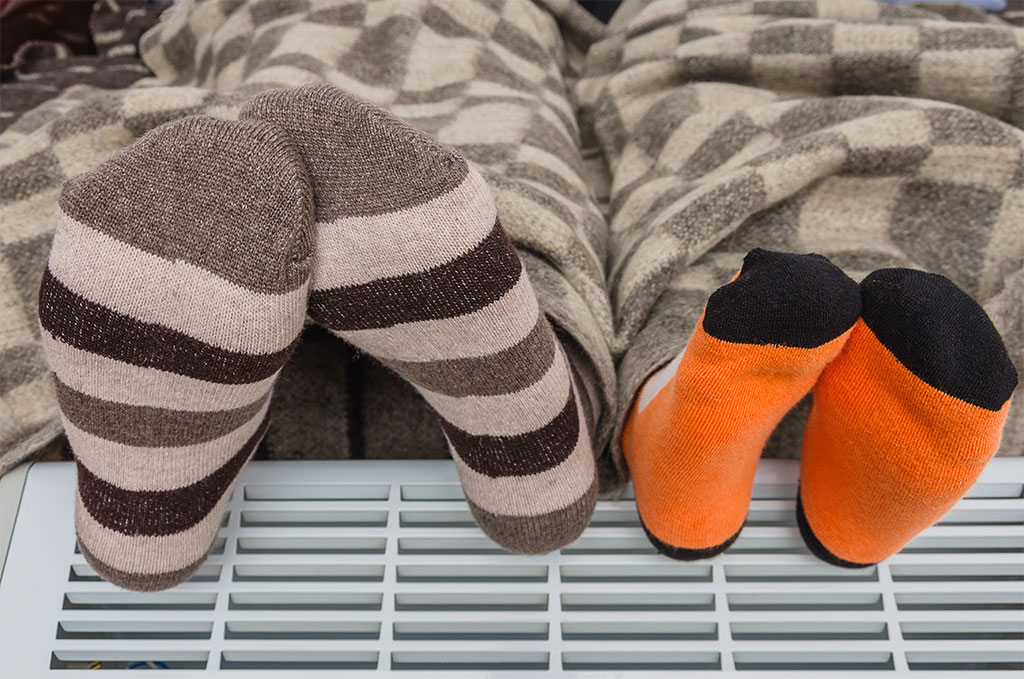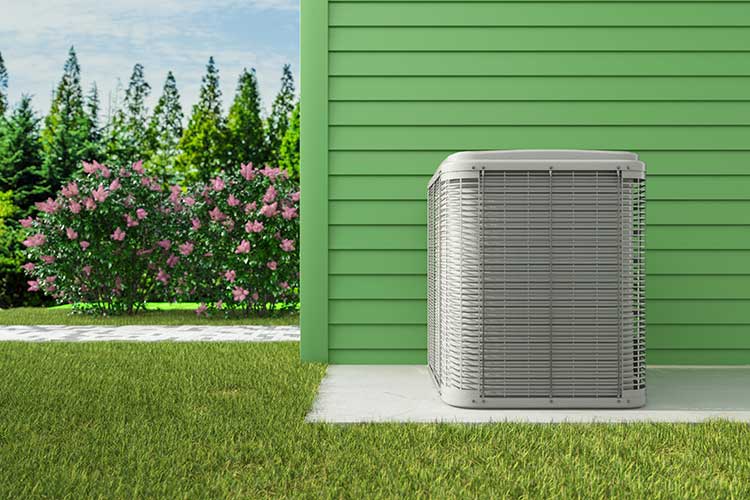Choosing New HVAC Equipment and Getting It Installed Properly
Last updated November 2025

How well a new system performs and what it costs largely depends on how well it is designed and installed. If you need to replace or add equipment, there’s lots to consider.
Invite several companies to your home to offer written proposals. Ask each to explain whether you need more than one separate heating or cooling system and more than one thermostat, and whether you’d benefit greatly from features such as variable-speed blowers. If you’re adding a new type of system, ask how ducts will be run, where and how a condenser unit and blower will be mounted, plus how to access equipment for maintenance and filter replacement.
Their advice and your choices affect how noisy the system is, how quickly and uniformly your home is heated or cooled, how easy it is to maintain, energy consumption, and how disruptive the installation process will be. You’ll also want to ask how much closet, attic, or outdoor space the system requires, and how disfiguring the ducts and air-supply registers will be.
Ask each company which makes and models of equipment it will install and their capacity, energy efficiency, and sound ratings. Most companies can offer equipment at several different quality levels; ask about pros and cons.
Energy Efficiency Matters
If you need new HVAC equipment, companies will present you with several options offering a range of energy efficiency capabilities. Learning some energy-ratings lingo will help.
Gas furnaces are rated by annual fuel utilization efficiency (AFUE). AFUE ratings for new furnaces range from 90 to nearly 99, higher being more efficient. Simply said, a furnace with an AFUE rating of 90 uses 90 percent of its fuel efficiently and wastes 10 percent.
The efficiency of both air conditioners and heat pumps in cooling mode is measured by seasonal energy efficiency ratio (SEER2). For new central air conditioners and heat pumps, SEER2 ratings for residential units range from 14 to 28, higher being more efficient.
The efficiency of air-source heat pumps in heating mode is measured by heating seasonal performance factor (HSPF2). New central heat pumps range from 7.5 to 10.5, higher being more efficient.
Need a new central air conditioner? Consider a heat pump instead. These devices are basically air conditioners that can both heat and cool buildings. New models are extremely energy efficient and quiet and can reduce reliance on furnaces. You can claim a $2,000 federal tax credit if you install an efficient model but you’ll have to act fast—it goes away at the end of 2025.
For all types of HVAC equipment, energy-efficient models cost more than basic ones. For example, a highly efficient 98 AFUE gas furnace costs about $1,000 more than an 90 AFUE model. For many homeowners, environmental concerns inspire them to pay extra. But lower power bills and rebates from utility companies often provide additional financial motivation. In this area, you’ll quickly recoup the extra cost of buying a high-efficiency furnace.
Most HVAC contractors won’t provide detailed calculations on exactly how much highly energy-efficient equipment will lower your utility bills. But they can estimate what percentage you’ll save with different types and models of equipment. You can then roughly calculate your annual energy bills to determine how much you’d save with say, Furnace A versus Furnace B.
Online tools can also give you rough energy-use estimates. We’ve tried several and like Snugg Pro best for its straightforward user interface, up-to-date data on energy costs and weather, customization, and overall modeling accuracy.
If you’re planning an addition or seeking to improve heating or cooling in one room, a basement, or an upper floor, consider a ductless mini-split heat pump. These highly energy-efficient units are common in Europe and allow you to control temperatures in a single space.
Finally, when comparing equipment, know that features such as variable output and two-stage burners that reduce energy usage won’t be reflected in models’ efficiency ratings; ratings are determined while equipment operates at full capacity. A variable-speed heat pump, for example, usually runs at a constant low speed to maintain the correct temperature, increasing speed and energy use only as needed. If you are comparing the energy efficiency of two different units with similar energy-efficiency ratings—one with variable-speed capability and the other without—the variable speed model will use less energy. The same is true when comparing furnaces that have one- or multiple-stage burners. It’s difficult to assess exactly how much energy these features save, but a reasonable rule of thumb is to assume that two-stage burners and variable-speed blowers each decrease furnace energy waste by about 10 percent and increase corresponding SEER2/HSPF2 ratings by 1.0 to 1.5.
Don’t spend thousands of dollars on energy-efficient HVAC equipment without taking other steps to reduce waste. Identifying and sealing leaks and improving insulation will give you the biggest bang for your energy-conservation buck. In our section “Saving Energy at Home” we detail 30 ways to cut usage. Many improvements cost little or nothing but will have big effects on your utility bills.

Getting Dependable Equipment
Consumer Reports used to regularly survey its members and collect ratings from those who reported having purchased new furnaces, heat pumps, or air conditioners. It also asked survey participants to report on any needed repairs since buying equipment, which it used to calculate a predicted reliability score for each manufacturer.
Unfortunately, CR discontinued those surveys and its ratings. But it’s widely agreed in the industry that equipment quality is much less important than installation quality. As one contractor told us, “It just doesn’t matter too much. If I take the time to install the equipment properly, I can put in the biggest-piece-of-junk furnace and make it hum for 20 years.”
Getting the Correct Size
Make sure that the equipment you buy is the correct size for your home. Undersized units won’t efficiently heat or cool spaces; oversized units cost more and cycle on and off constantly, thus boosting utility bills, making more noise, requiring more frequent maintenance, and dying sooner.
The size of heating and cooling units is called capacity. For furnaces and heat pumps, capacity is the amount of heat a unit can generate as measured in British thermal units (Btu). For air conditioners (and heat pumps operating in cooling modes), capacity is measured in Btu but expressed as the amount of heat the units can remove. The capacity of heat pumps and air-conditioner units is usually described in “tons.” One ton equals 12,000 Btu—for example, a 36,000-Btu air conditioner is a “three-ton unit.”
If you have expanded your home, finished a previously unconditioned space, or if your old equipment didn’t sufficiently heat or cool all parts of your home, companies should perform a load calculation to determine the right size of equipment. (If you are replacing old equipment that had adequately heated and cooled your home, you can skip this step.)
Getting a Quiet Place
The sound rating of equipment is measured in bels or decibels, with lower ratings being quieter. Compared to equipment made 20 years ago, new systems are very quiet.
Getting a Fair Price
Getting competitive bids from several contractors will save you money. For large installation jobs, it’s common for company-to-company price differences to exceed $1,500 for the same equipment and work. Even for smaller installation jobs, prices vary considerably.
Our Ratings Tables, which report price comparison scores based on our undercover price shopping, will help you select companies likely to make reasonable bids.
Watch Out for Shady Financing Offers
HVAC replacements cost thousands of dollars. Because many homeowners don’t have that much cash on hand, many installers offer financing through third parties—often at high interest rates.
Before signing loan paperwork, review all repayment terms. If an HVAC company offers you a zero-interest loan, you’ll often have an interest-free period but pay a hefty deferred interest fee when it ends. Some HVAC outfits now push equipment leases; the policies we’ve reviewed might be the most lopsided contracts we’ve encountered in our 50-year history.
Getting a Good Contract
In addition to the price, a description of equipment to be installed, and work to be done, each contractor’s proposal should include the following elements.
Performance Guarantee
For a complete heating and cooling system, the guarantee might say: “When the outside temperature is 85°F and six people are inside, the inside temperature can be maintained at 78°F or cooler; when the outside temperature is 40°F, the inside temperature can be maintained at 75°F or higher.”
Also request a guarantee covering the uniformity of temperature. On a hot day, you don’t want to lower the temperature of some rooms to 65°F to get other rooms down to 78°F. If you are having ductwork installed, companies should be willing to guarantee that “all rooms on the same floor can be maintained within a range of 5°F.” It’s more difficult to make promises on floor-to-floor temperature variation, unless you install a separate system for each floor.
Installer’s Warranty
The installer’s warranty should cover free repairs due to any defects in equipment or workmanship, or any failure to meet performance specifications. One year is standard; try to negotiate for longer, but contractors may insist that most installation defects show up over one full heating or cooling season.
Payment Schedule
Get a contract requiring no payments until the work is finished. By withholding money until the end, you’ll prod the contractor to make things right if you are not satisfied. It’s also a sign that the company is at least financially secure enough to buy equipment and make payroll without customers’ payments.
If possible, pay by credit card. If you are dissatisfied with the work or the equipment, you can dispute the charge with your credit card company.
Insurance Coverage
Ask every company you are considering for a certificate of insurance indicating that it carries workers’ compensation coverage for workers injured while on your property—otherwise you could be liable. Also, get evidence of liability insurance, so you’ll know the company can make good if, for instance, it starts a fire.
Additional Work Specifications
Go over the details of exactly what work is to be done. Make sure each company’s proposal (and the contract you sign) is explicit about:
- Providing needed electrical supply and hooking up your system to your existing electrical panel;
- Providing drainage for condensate;
- Providing equipment support (a base for an outside condensing unit, for example);
- Securing all required permits;
- Enclosing ductwork, finishing, and painting;
- Patching holes;
- Removing trash and old equipment.
Get It in Writing!
Once you have settled on all the terms, have them written into a fixed-price contract. Unfortunately, our surveys of consumers have found that for jobs over $2,000, more than 10 percent of customers fail to get such contracts; and for jobs costing $1,000 to $2,000, more than 30 percent fail to document the deal.


